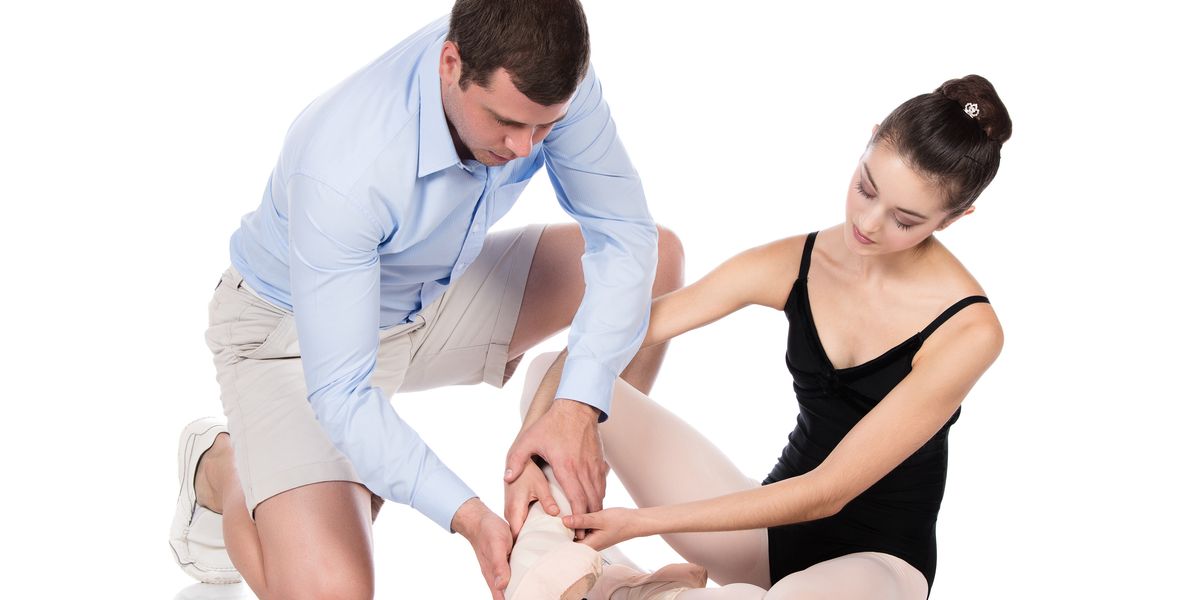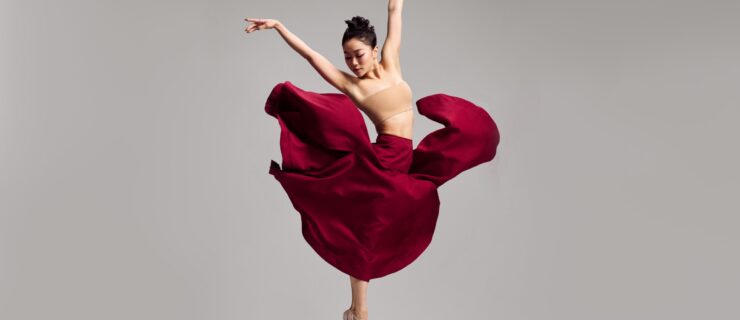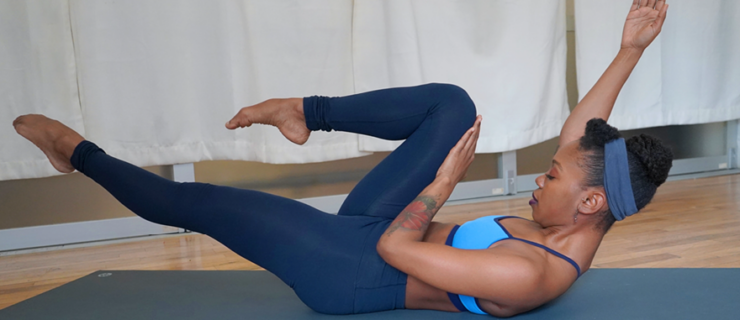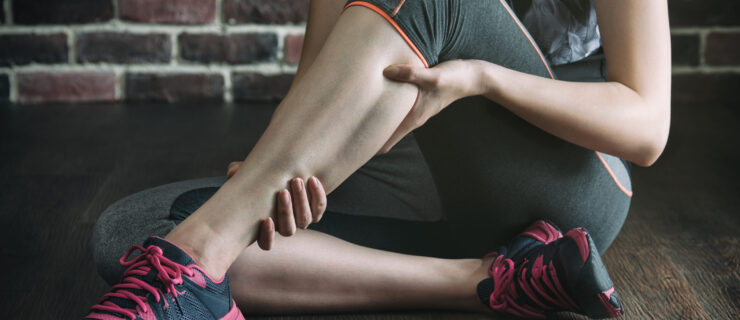Beating Achilles Tendonitis: How to Avoid This Common Ailment of Pointe Dancers Everywhere
Bianca Bulle was always prone to ankle sprains. When she was 18, her recoveries became more complicated: She started experiencing Achilles tendonitis due to muscle weakness and fluid buildup in the ankle. “The last thing to get back to normal would be my Achilles, which was so incredibly tight and painful,” says Bulle, now a principal at Los Angeles Ballet.
The Achilles is the body’s largest tendon, attaching the bottom of the calf muscles to the back of the heel. It contracts and releases as you relevé and plié, as well as when you jump and even walk. Tendonitis, or inflammation, of the Achilles is one of the most frequently reported overuse injuries among active people, according to the American Physical Therapy Association. You’ll know it by the pain or tightness at the back of the heel. If the condition gets bad enough, the tendon can rupture, which requires surgery to fix.
Achilles tendonitis is especially common among dancers on pointe, but it’s not inevitable. With rest and proper conditioning, you can work to avoid it with careful technique and a commitment to cross-training.
 Boston Ballet School pre-professional students. Igor Burlak Photography, Courtesy Boston Ballet.
Boston Ballet School pre-professional students. Igor Burlak Photography, Courtesy Boston Ballet.
What Causes It?
Margaret Tracey, director of the Boston Ballet School, sees Achilles tendonitis most among summer intensive students who aren’t used to a heavy schedule of pointework, or young pre-professional dancers who move up a level and increase their weekly pointe schedule. But while overuse is one source of the ailment, it’s rarely the only factor.
For instance, the Achilles take on more than their fair share of the load during relevés and other movements if the muscles that support the feet and ankles are underdeveloped. The same is true for larger muscle groups that support bigger movements. “Glutes and quads are big muscles for a reason,” says Dr. Sarah Edery-Altas, a former professional dancer and a physical therapist at the Harkness Center for Dance Injuries at NYU Langone Health. “They’re meant to propel your body up into the air.”
Poor technique habits, such as not putting the heels down during jumps, can also stress the Achilles. “If I know a student is not using the depth of her plié, or not fully going through the foot and just gripping the back of the ankles, I talk to them,” Tracey says.
Additionally, rolling in or forcing your turnout so that knees don’t track over toes can mess with your heel alignment, aggravating the tendon. But be careful: Edery-Altas says some dancers try so hard not to roll in that they pull up on their arches too much; walking around that way can cause other alignment issues.
Sometimes, anatomical issues are the culprit. An os trigonum, or an extra bone that develops behind the ankle in some dancers, can irritate the FHL (flexor hallucis longus), which can be misdiagnosed as Achilles tendonitis and missed by many orthopedists.
 Getty Images
Getty Images
How Do I Treat It?
Because of the many possible factors, it’s important to get a professional medical opinion. If your Achilles is tight, stiff or tender for more than two days, especially first thing in the morning or before you warm up, you should visit a doctor (ideally one familiar with dancers’ needs) to find out what’s causing it. Edery-Altas recommends icing at the end of the day and resting the Achilles when possible to manage pain. That can mean doing fewer jumps and relevés, or sitting out of class altogether, depending on what your doctor says. While relative rest will allow tissues to heal, reducing activity won’t cure it forever. “If you take away jumps and relevés and feel better, and then you go back, the same thing is going to happen again,” she says, “because you haven’t changed your mechanics, strength or technique.”
Strengthening intrinsic muscles of the feet and ankles—doming, towel scrunching, resistance band point/flex exercises and learning to tap each toe individually—can help take the load of pointework off the Achilles. (See above for a helpful strengthening exercise.) Edery-Altas also recommends bodyweight-based strengthening exercises, especially squats, which target the large glute, quad and hamstring muscles.
As for ballet class, it pays to plié. The Achilles is elastic, so elongating it in a full plié before a jump will give you more power as the tendon springs back to size, says Edery-Altas. Bulle recommends using elastic ribbons, which are gentler on the backs of the ankles. Stretching your calves periodically throughout class is also important. You can do a basic calf stretch and runner’s lunge, or hang the heels off a step. Dynamic stretching helps, too. Bulle practices yoga’s downward dog pose, “not holding it but moving through the stretches.”
If you’ve taken time off to heal, use caution when returning to class. Edery-Atlas says it’s not okay to push through the pain, even if it only reaches 2 or 3 on a scale of 10. At that point, you should stop or modify movements that bother the tendon, and talk to your physical therapist or doctor again. You may not be ready to return to class yet.
Have your teacher monitor your technique closely. You may need a PT’s help to retrain your body—alignment issues, especially, may be too subtle to correct on your own. Talk to your teacher about the PT’s recommendations in terms of what to watch for, as well as any restrictions on your dancing. Tracey encourages her students to talk to her right away if they’re feeling pain. “We have one instrument,” she says. “From time to time it’s out of tune, but it’s our job to make sure we keep it strong and healthy.”
Relevé Exercise for Achilles Tendons
Dr. Sarah Edery-Altas of the Harkness Center for Dance Injuries recommends this exercise, which targets the calf muscles that connect to the Achilles tendon, for conditioning as well as for recovering from tendonitis. Those recovering may experience pain that ranks 2 or 3 on a scale of 10. That’s okay for this exercise.
1. Stand in parallel, with feet a comfortable hips’ width distance apart.
2. Keep your knees straight for the whole exercise, and lean the torso forward slightly, maintaining a neutral spine.
3. Lift your heels in a full relevé.
4. Lift one foot off the floor, and lower the standing heel slowly.
5. Repeat on the other side.
- Try 15 reps twice daily for 12 weeks.
- If you have time and can tolerate it, the exercise can also be done with bent knees and with the heels hanging off a step, for a larger range of motion.





